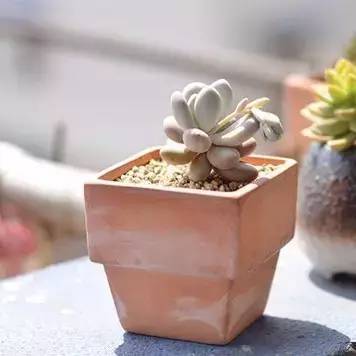The formation and breeding of Orchid Dragon Root do not try if you are impatient

Orchid seeds have high requirements for the environment, and few people use seeds to cultivate orchid seedlings. An orchid contains tens of thousands of seeds, and only a small number of orchid seedlings can be produced in the mountains, which shows the difficulty.
If the subject is really interested in experimenting with orchid seed breeding, the farmer can share it with you with his own experience. I have not propagated orchid seedlings directly with seeds, but I have raised rootless and leafless orchid dragon root seedlings.
Dragon root is an orchid seed that lodges before it is ripe and then ripens and spreads on the ground, so it is not affected by the wind, so the seeds accumulate together. It just happens that the environment here is particularly suitable for orchid seed germination, seed germination on the spot. Orchid seeds are different from other seeds, they have a fusion function, many seeds fuse together to form a tuber like ginger, this is the orchid dragon root (or dragon egg).
The top and bottom pictures show a dragon egg obtained by a good farmer on June 15 this year. At that time, the steps of getting into the basin are as follows: the fermented pine bark is padded to the bottom of the basin, and the height is about 2/3 of the height of the basin, so as to maintain air circulation in the basin. Spread a layer of clean fine river sand on the pine bark, and then put the dragon eggs on the fine river sand, the thickness of which is 5 / 6 of the basin height.
Finally, sprinkle a thin layer of humus to cover the dragon eggs, spray water every two days, only spray can not be watered, because the fine humus can not stand the impact of watering, placed in a cool, ventilated and sunny place.
Around August 10, the dragon egg produced two new bud heads (2 pictures). At that time, it was thought to be a seedling, but it was later known that it was not a seedling, but could be regarded as the Reed head (false bulb) of orchids in the future. It was not until September 12, when it was three months away from the basin, that a new seedling was unearthed on the basin (3 pictures). Even if they hatch into seedlings, it will take at least 4 years for such orchids to bloom, so those who are impatient do not need to raise orchid seedlings.
If you have any other questions, please feel free to leave a message in the comments section.
- Prev

5 yuan, 3 jin chili, unique pickled, spicy, enjoyable, greedy, and rice.
The flower-growing sister pays attention to me and teaches you to grow flowers in this way, which is more luxuriant and beautiful. Pay attention to the preparation of pickled pepper ingredients: three jin of pepper, garlic, ginger, star anise, pepper, light soy sauce, vinegar, rock sugar, chicken essence: 1, prepare three jin first.
- Next

How to plant orchids with a high survival rate?
How to plant orchids with a high survival rate is actually a clich é. The farmer who took a look at the statement on the Internet could not help but say it again to prevent novice Lanyou from getting into a misunderstanding and suffering losses. It is right to trim the roots of orchids before they are put on the pot.
Related
- Wuhan Hospital Iron Tree Blooming Result Was Instantly Frightened by the Gardener Master
- Which variety of camellia is the most fragrant and best? Which one do you like best?
- What is the small blue coat, the breeding methods and matters needing attention of the succulent plant
- Dormancy time and maintenance management of succulent plants during dormancy
- Minas succulent how to raise, Minas succulent plant pictures
- What are the varieties of winter succulent plants
- How to raise succulent plants in twelve rolls? let's take a look at some experience of breeding twelve rolls.
- Attention should be paid to water control for succulent plants during dormant period (winter and summer)
- Watering experience of twelve rolls of succulent plants
- Techniques for fertilizing succulent plants. An article will let you know how to fertilize succulent plants.

